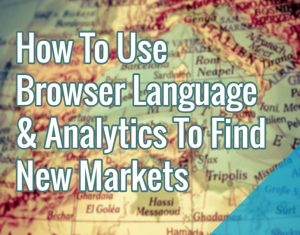— July 7, 2017

ar130405 / Pixabay
Even if your business is a physical retail store, you still need to pay careful attention to an SEO guide. Digital marketing is vital for any business, as about 81% of all shoppers research products online before buying. With over 100 billion monthly searches on Google, one can see that getting a website noticed is vital. Good SEO is the key to that.
Step-by-Step SEO Guide for Physical Retail Businesses
1. Analyze Your Website
If you already have a website, you must assess its current level of search engine optimization. Note that this will involve more than analyzing keywords. Meta tags, loading speed, and a variety of other factors matter. Be sure to pay attention to such details as photo alt tags and heading tags.
As Google is the main search engine you need to optimize for, you should use Google Webmaster’s Tools, like Google Fetch. They are updated along with the search engine’s protocols. Therefore, they will help you understand your website’s current standing.
An SEO optimized website should have a site map and no broken links. It also must use keywords and URLs effectively.
2. Research Your Keywords
Use your ultimate campaign’s goals as your SEO guide when choosing keywords. Do you want to attract more buyers or provide advice? ‘Near me’ searches soared over the last 5 years so you must optimize for them.
As a physical retail business, local SEO should be your main focus. Therefore, you must think about the ‘search intent’ of your prospective buyers. What words would you use when looking for a nearby shop?
Google’s AD Words Keyword Planner can give you some ideas. However, this task is best entrusted to professional marketers as they can come up with the most effective keyword lists. Professionals have the experience to determine the right keyword combinations. They also have a variety of specialized tools that can help them measure and predict the effectiveness of their choices.
3. Set Up Social Media Accounts
Facebook, Twitter, and Instagram have several billion users between them. Each is a potential customer pool and a great channel for connecting with your customers. Social media is a great platform for boosting your SEO. You can also use it for:
- Spreading information about your promotions
- Strengthening your brand by promoting your culture
- Building good relationships with your customers and enhancing their loyalty
Social media can drive traffic to your website, but each network requires a specialized approach. Some rules that work for each include:
- Using hashtags
- Including visuals
- Cross-promoting your content
4. Launch Press Releases
In most cases, professional SEO companies will include this in their service. Without their help, it may be difficult for a business to reach numerous news portals. As a physical business, you need to emphasize on the portals relevant to your area so that you can reach your targeted customers.
The basic SEO guide of a professional agency would include not only press releases but also guest posts, interviews, etc. Think of it as a PR for brand promotion and link building at the same time.
5. Develop Top-Quality Content
Now that you have established the channels for sharing it and determined the keywords, you can start building content. Its quality is vital for the success of your SEO campaign. Google is extremely demanding with regards to the quality and value of content today. This means you can’t ‘cheat’ it by publishing mediocre posts packed with keywords.
Bear in mind that large texts (1000+words) with long titles (6-13 words) generate more views and better conversion rates.
Use a Professional SEO Guide to Achieve Success
SEO is a highly complex process that requires an extensive amount of research and consistent effort. To optimize your website for Google, you’ll need to not only change the site itself but you’ll also have to tie it to social media accounts and promote your content everywhere. Getting professional assistance will help you succeed.
Digital & Social Articles on Business 2 Community
(111)
Report Post








